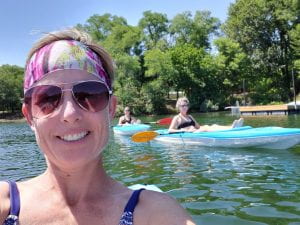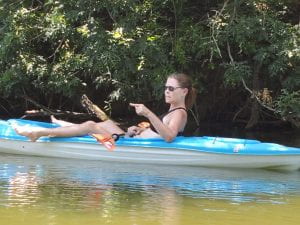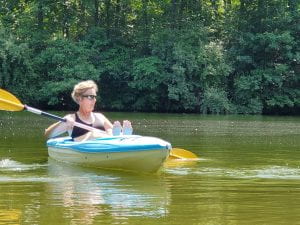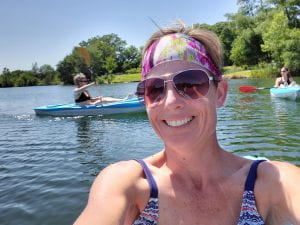That’s wildly inappropriate for many, many reasons, but it brings up a big selling point of #balancedliteracy: If we just surround children with books and reading they will learn to read. This is a beautiful, terrible lie.
— Briar in Blue (@auroraworeblue) January 1, 2021
This series of tweets prompted some thinking about misplaced blame around learning to read. Oh, my goodness. I hate to admit how much I subscribed to this very philosophy: “…if we just surround children with books and reading they will learn to read.” As a 4th, 5th, and 6th grade teacher, I was never in the trenches of truly teaching children to read like the (saintly!) kindergarten through third grade teachers that came before me. All the same, I was confident that if those teachers were drowning their students in books, and if families were doing the same, their students were learning to read. And if I would continue to find “Just Right” books for those same kids, appealing to something that interested them, they would continue to grow as readers.
Don’t get me wrong, I still believe in surrounding kids with books in an effort to support their reading development and love of reading. And I still believe that children who grow up in homes that value literacy have a leg up on their peers. My mistake, my HUGE mistake, was in laying blame on families who didn’t read to their kids (“Just read to them!”) , and believing that these students were destined to never catch up with their peers in reading ability.
I will forever be grateful to Emily Hanford who has dedicated four + years of her work to learning about reading problems in our country. Emily is not an educator; she is an APM journalist who has a much deeper understanding of how learning to read works than I do… and I have been in education for 25 years. Her September 2018 article (which you can also listen to), “Hard Words; Why Aren’t Kids Being Taught to Read,” placed my trajectory of understanding around learning how to read on an entirely different path.
This woman is a powerhouse of knowledge. She’s also pretty darn easy to listen to. I don’t know if Emily Hanford drinks wine, but I sure feel like I could sit and have a glass of wine with her, and talk for hours and hours about literacy instruction. She’s an easy-going, no-nonsense, knowledgeable person that I really, really hope to meet in person some day… and hope that when that day comes, I’m not so star struck that I can’t sustain an intelligent conversation.
Emily was kind enough to respond, within a few hours, to an email I sent her way in the summer of 2020. I felt strongly compelled to tell her that she was the “opening act” in a class I had created for our teachers around our new reading curriculum, EL Education, which aligns with the science of reading. I tried to keep my email brief, knowing that Emily Hanford has many more important things to do than read an email from a Literacy Coach in southeast Iowa. 🙂 My sisters and I were kayaking when her return email came in. Let me just say, it was awfully hard to come down from that high – I got an email from Emily Hanford!!!




In Hard Words, Hanford reminds us that reading is not a natural process. “The human brain isn’t wired to read.” We have to build new pathways in the brain to link letters and sounds. The written word has only been in existence for a few thousand years, a mere blip in time. Dr. Louisa Moats, a renowned researcher in the reading world, tells us that 1000’s of studies have been done on how the brain learns to read. Starting in the 1990’s, the research around learning to read really started to come into focus. Scientists were able to look into the brain to see what the reading process looks like. This process is much different than the process of learning to talk. “We are born wired to talk.” Learning to talk is a natural process: we learn to talk by listening to others, by being surrounded by language, and imitating the sounds they make. Reading, however, does not come to us naturally. “Kids must be explicitly taught how to connect sounds with letters — phonics.” There is so much more to the science of reading than phonics. But a systematic and explicit phonics instructional sequence must be in place for solid literacy instruction to happen.
Somehow, this research has not made it to the classroom. In many American classrooms today, teachers are still operating under the assumption that learning to read is as natural as learning to talk. And if students aren’t learning to read, it is probably due to poverty. The blame goes to families who do not surround their children with books, who don’t read to their children. Again, I subscribed to this philosophy for the better part of my teaching career. I thought I could fix the problem by the time they came to me in 4th, 5th, or 6th grade by filling in the gap that their families (allegedly) had formed. I could fix the problem by placing books in their hands that were at their interest level. It’s an interesting philosophy, that quickly crumbles when we come to grips with the fact that if the students are unable to “crack the code,” it doesn’t matter how interesting the book is. If they can’t decode the words, they can’t read the damn book.
In placing blame around poor reading instruction, perhaps a large part of that blame can go to secondary education. From Hard Words: “Most teachers nationwide are not being taught reading science in their teacher preparation programs because many deans and faculty in colleges of education either don’t know the science or dismiss it. As a result of their intransigence, millions of kids have been set up to fail.” I would also lay blame on publishers of reading materials who choose generating revenue over aligning materials with the science of reading. The only time this blame can fall on teachers, and this would be an incredibly rare instance, is when a teacher is inundated with evidence around how children learn how to read, yet ignores the evidence. To date, I know of no teacher who has succumbed to this ignorance. Unfortunately, most teachers still have not been provided the opportunity to learn about the science of reading. Or they are just beginning their journey around learning about the science… and it’s a long and arduous journey (I’m two years into my own journey, and feel like I’ve just begun!). As Louisa Moats writes, “Teaching Reading is Rocket Science.”
Thank goodness, Emily Hanford’s journey/mission to change literacy instruction continues. In August of 2019, Hanford/APM released the article (which you can also listen to), “At a Loss for Words; How a Flawed Idea is Teaching Millions of Kids to be Poor Readers.” In August of 2020, Hanford/APM released the article (which you can also listen to) “What the Words Say.”
In addition to Emily’s tremendous impact in journalism, she has also been the keynote speaker at multiple literacy webinars/symposiums. I have attended as many as I can (virtually). Although each is essentially the same presentation, a person can walk away from each with new learning. Every time. I not only walk away with new learning, but I can’t come down from the literacy high that Hanford places me on. Every time.
If you have any interest in the state of literacy instruction in our country right now, read Hanford’s work. If you have a child, niece, nephew, loved one that is learning to read, immerse yourself in Hanford’s work. If you have a child, niece, nephew, loved one that is struggling with learning to read, douse yourself in Hanford’s work. If you are a teacher of reading, at any grade level, absorb every word of Hanford’s work, and make changes in instruction. Implore your colleagues to do the same.
Check out Hanford’s latest tweet, loaded with invaluable resources around the science of reading:
Want to learn more about the “science of reading” and why it’s so important for teachers (and parents) to understand what scientific evidence says about how kids learn to read? A collection of resources here to get you (more than) started. https://t.co/l5lhI2ymYw
— Emily Hanford (@ehanford) January 9, 2021
I remember when you got the reply from Emily Hanford!
Megan, I must tell you that you have me thinking about what I want to do when I retire! I think I want to return to the first-grade classroom – or other primary grades – as an aide preferably – and apply this science of reading! I am not kidding!
But… not until after I contribute to the strengthening of our students’ information literacy skills with the help from the News Literacy Project – https://newslit.org, Common Sense Media – https://www.commonsense.org/education/digital-citizenship/curriculum, and some of my own research – https://www.diigo.com/profile/m_h_s_library?query=%23digital_literacy
You have warmed my heart, Dear Katie!!! Thank you for being a such a strong influence on my learning journey – it never ends, right??? Love, love, love your goals: current and future. 🙂
Thank you for this article and a huge thank you for your transparency. I will definitely follow up with Hanford’s work as I am thinking about my nieces and nephews who are experiencing difficulties because of the trauma that they have already experienced in their young lives. While I know that there are barriers that will inherently create barriers because it has I desire to equip myself as I support them. I am an educator as well and as a Black educator, the one thing that I did do when I was in the classroom was pretend that the barriers didn’t exist which is an exercise in futility. Yes, these barriers exist but don’t let me as an administrator dismiss the fact that there’s a whole science out there that can support the process of reading of which we have not been exposed to (regrettably). I am excited about this reveal, if you will❗️Again, thank you❗️
You are welcome, Angela… and thank YOU for your readership and response. I am so thrilled to know that you will be digging into the science of reading, especially in your role as an administrator. I am fortunate to have the support of amazing administration in my district. Hanford’s work is a terrific place to start your journey; it will naturally lead you to the work of others, as she does such a phenomenal job of highlighting this very important issue. Barriers are easy to ignore, but ignorance sure doesn’t make them go away.